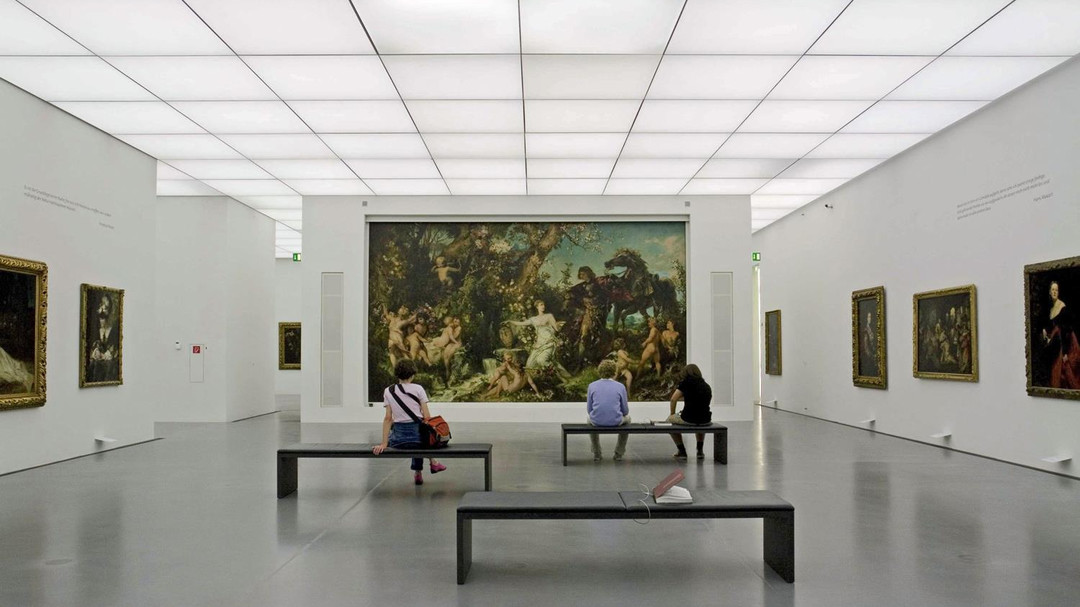Museums hold a prominent position in society and can offer much more than what meets the eye; in fact, visiting a museum has become a knowledge-rich and experiential activity for its visitors. But how can one create and ensure effective visitor learning experiences?
Experiences should always be designed with the visitor in mind.
The authors of “The Museum Learning Experience Through the Visitors’ Eyes: An Eye Tracking Exploration of the Physical Context” had the opportunity to conduct an existing study with eye-tracking technology as part of a research project in collaboration with Salzburg Museum. By examining the influence of a museum’s overall physical context on a visitor’s experience, Rainoldi, Yu, and Neuhofer (2020) were able to show the importance of different visitor age segments as well as the effectiveness of object and spatial design for providing a good visitor flow experience in a museum setting. More details regarding this research will be briefly introduced in the following post.
Digital technology and visitors’ attention/gaze
Although museums allow for an engaging and informative experience, maintaining visitors’ attention throughout the duration of their museum stay proves to be a difficult task at times. Due to museum fatigue (i.e. tiredness leading to decreased interest) and satiation (i.e. lack of attention owing to repeated exposure), it is crucial for a museum to be able to facilitate learning experiences while also taking those two factors, along with visitor profiles, into consideration. As a result, more and more museums (e.g. the Louvre and Brooklyn Museums) are turning towards digital content and the incorporation of technological materials to aid visitor experiences.
“As opposed to traditional media that are static in nature, technology-driven elements attract higher levels of interest and attention and have been used as an effective tool to serve educational purposes.”
When it comes to tourism, the interplay between education and visual attention plays a large role. Visual attention, in particular, is what encourages information retention and interpretation, ultimately affecting the overall tourism experience. Furthermore, hindering distractions and adequately arranging artifacts can promote a more pleasant experience and an effective visitor flow. Thus, it is essential for designers to be aware of which artifacts/exhibitions attract visitors’ attention and which ones are more opt to result in mental fatigue and satiation. By strengthening the learning experience and, in turn, the overall experience, visitors’ satisfaction as well as intention to revisit and to recommend the museum increase accordingly.
Learning in a museum environment
As a person’s attention span is highly individual, the Contextual Model of Learning (see Falk & Dierking, 2004) aims to introduce three factors that may potentially influence visitor learning:
- the socio-cultural context –> interactions between one another;
- the personal context –> individuals’ interests, backgrounds, and motivations; and
- the physical context –> orientation of space and design.
This framework has been applied often when analyzing museum-learning experiences; yet, in this case, the focal point remains on the physical elements of an exhibition. Previous research has revealed that the size, distance, and details of artifacts and the orientation of the physical environment do indeed make a large difference. Moreover, emphasis has been placed on the fact that age differences may affect visitors’ experiences as well. Therefore, this research aimed to investigate the relationship between physical context and a visitor’s learning experience in addition to examining how a visitor’s age influences the museum experience.
Eye tracking and fixation times: findings
As it is nearly impossible to study a visitor’s gaze and attention using traditional research techniques, the emerging technology of eye tracking comes into play, allowing researchers to capture natural gaze points in real-life situations, for instance, at a museum. For this study, 34 participants (aged between 17-80) were asked to wear eye-tracking glasses while walking through an exhibition at the Salzburg Museum. In this way, fixation times could be established for each participant.
“Fixation times are of particular interest for assessing learning processes because the length of a fixation is indicative of the brain’s information processing and cognitive activity at a particular moment in time.”
Based on the data, findings regarding visitors’ eye fixations, visitors’ engagement, and age could be determined. The study revealed, amongst others,
- which elements from the exhibition captured the visitors’ attention the most;
- that visitors noticed and looked at information boards first, but spent the most time engaging with video screens;
- that older people tend to spend more time reading the information boards than younger people do;
- that there was a significant difference between age groups in regards to the use of digital media (e.g. video screens and touch screens).
All in all, the study presents a complex relationship between a visitor’s personal context (e.g. age) and the physical context (e.g. design of the exhibition) in a museum setting, thus providing further insights for museums and opening up new avenues of research within the tourism sector. Thanks to the findings in this research, museum experience designers can take away some key points for implementation, such as to always take their target audience into consideration and to design the experience of exhibition rooms, visitor flows, information presentation, etc. with different age groups and visitor engagement in mind. As such, integrating digital technology and media, while also creating an adequate balance for the visitor target group, is crucial. By inviting visitors to interact and engage with the artifacts, learning and an overall great museum experience can indeed be accomplished.
To read more about this study, download the full article here:
Or take a look at the chapter in Eye Tracking in Tourism:
Rainoldi M., Yu CE., Neuhofer B. (2020) The Museum Learning Experience Through the Visitors’ Eyes: An Eye Tracking Exploration of the Physical Context. In: Rainoldi M., Jooss M. (eds) Eye Tracking in Tourism. Tourism on the Verge. Springer, Cham. https://doi.org/10.1007/978-3-030-49709-5_12
Image source: https://www.salzburg.info/en/sights/top10/salzburg-museum
